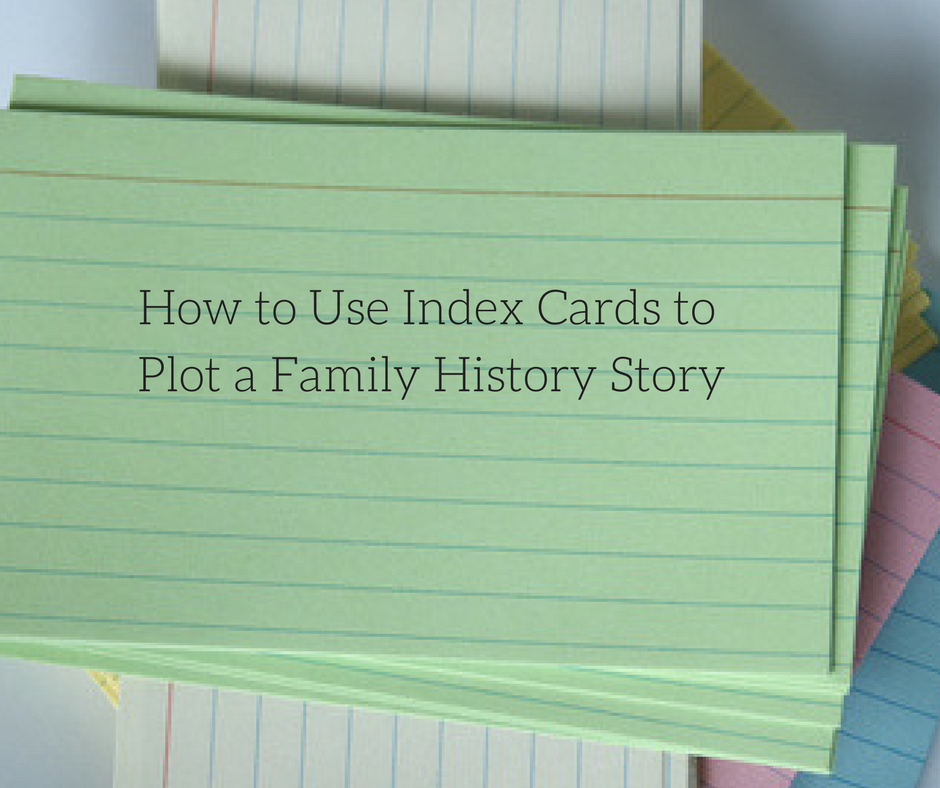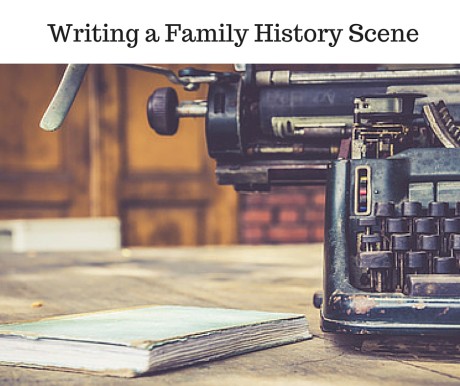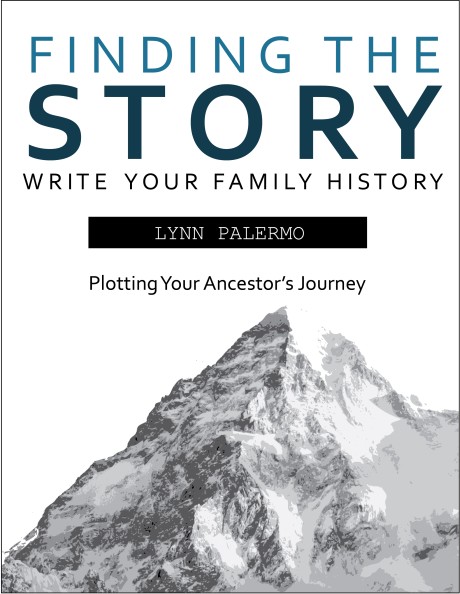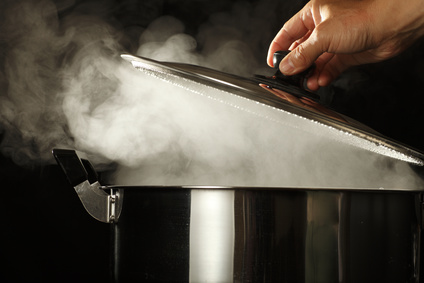Today’s discussion is all about how age influences character development in our writing. It’s more than just a number; it’s a dynamic element that can shape your ancestors’ perspectives, decisions, and interactions.
Learn How To Add Depth to Story with Your Ancestor’s Age
2 thought on “Learn How To Add Depth to Story with Your Ancestor’s Age”
Comments are closed.
Related Post

How to Use Index Cards to Plot a Family HistoryHow to Use Index Cards to Plot a Family History
I’m known as a plotter. This means I love to outline my stories in great detail before I begin to write. For me, it’s like creating a road map of a story from start to finish. It allows me to organize my story so that when I start to write I know exactly what I’m writing and where I’m going with the story. It eliminates sitting and staring at my computer screen in that deep dark hole known as writer’s block.
I use index cards to create this map. Each index card represents a scene or a summary. A creative nonfiction story is comprised of scenes and summaries and having those scenes carefully thought out in advance can help keep you organized and writing every day. Check out my scene building cards that I designed just for family history writers.
Once I have my story mapped out with my index cards, then I can begin to write my first draft.
While index cards may seem a rather old-fashioned method for outlining it is with good reason it’s still around, it works. Of course, just as technology has impressed itself on every aspect of our lives even the little old index card has not gone untouched by the digital world. You can still use paper index cards if you are tactile, and like the physical feel of a paper card in front of you. I love to lay out my index cards on a corkboard in my office it keeps my story in front of me and top of mind.
There are plenty of digital index cards available today that have replaced the paper card. For instance, Scrivener offers index cards on a corkboard so that you can storyboard your family history within the writing program. Check out this video to see how to use the Scrivener corkboard. Scrivener also offers the ability to print off those cards so you can still have those paper cards to shuffle around on a physical corkboard.
There are plenty of apps for index cards, the Corkboard Writing app, and the Index Card app are just a couple. Most are available for iPads and iPhones. Check the Apple App store for a selection.
Elements of an Index Card
An index card will record either a scene or a summary on the card. On each card, you will record bullet points to help you write that particular scene or summary. Here is an article that explains the difference between scene and summary.
Scene cards should contain a few basic elements that will help you to write the scene when it comes time to put pen to paper.
Who – the primary ancestor in the scene
Scene Goal – your ancestor hopes to accomplish an explicit goal with the scene. Read here about scene goals.
Action – what physically happens in the scene.
Setting – Where and when does it happen? Indoors? Outdoors? Time of year, day, place, etc.
Conflict – within the scene is conflict, tension or suspense.
Inner Journey– how is your ancestor emotionally affected by the outer journey or action happening in the scene.
Theme – Do the details in the scene support the theme you have created?
Index cards are another tool in our writer’s toolbox that helps us to break down our writing into manageable tasks, keeping us from becoming overwhelmed and hitting that all too familiar writer’s block.

Want to learn more about how to write to write a family history scene consider our upcoming class, Writing a Family History Scene.
To understand how to format a story using scene cards, consider joining us for our upcoming course Plotting a Family History Story or our e-workbook, Finding the Story. Also available on Amazon in paperback.

Cooking Up a Satisfying SceneCooking Up a Satisfying Scene
Like a good pot of soup on a cold’s winter’s day, every family history scene requires some essential ingredients to make them successful. Without a tasty broth, some colourful veggies, and a fat noodle the soup will just not satisfy. The same can be said for a scene, if it’s missing an essential ingredient it will likely fall flat and you may lose the interest of your reader. Today, we look at the ingredients that make a satisfying scene. Let’s identify the key ingredients in a family history scene each one closer so that you can create powerful and fulfilling scenes for your reader.
Protagonist Ancestor
The majority of your scenes should be built around your protagonist ancestor. Your protagonist ancestor is the main character of your story and through whose point of view, the story will be told. In each scene, your protag ancestor will be involved in action or dialogue. Make sure that you’ve chosen a single ancestor from which point of view that story will be told.
Action
Every scene shows some dramatic movement, large or small. It creates a sense of movement through time and space. It could be actual action or even dialogue which gives the essence of movement within a scene. Without action, you have no scene.
We want to demonstrate our ancestor’s movements, feelings, actions, and reactions. Don’t tell us about them, show them offer up the proof in the form of a scene.
Scene Goal
Every scene has a goal. We know that our story also has a goal, however, this is different from the scene goal. The scene goal begins and ends in the scene, but contributes to the overall advancement of the story.
Antagonist and Allies
Your protagonist ancestor needs someone to interact with, these will come in the form of an antagonist who opposes your ancestor’s goals or allies who will help your ancestor to achieve her goal.
New Information
Each scene builds on the previous scene providing new information that keeps moving the story forward. If it doesn’t move the story forward then perhaps it doesn’t belong in the story.
Setting and Time Period
Setting and time period is essential to grounding your scene through sensory details and description.
Theme
The overall meaning of your story is conveyed within scenes using images and sensory details.
Tension
Not only organizing your scenes within the story but by creating a feeling of conflict and uncertainty within a scene will keep the reader guessing as what is next and will keep them turning the pages.
Great Endings
Scenes can end in any number of ways. Some may end on a high-note, with a small victory for your ancestor, or in defeat. It can end with a cliff-hanger or some uncertainty. It’s important that each scene ends in such a way that it eludes to future obstacles for your ancestor and a yearning in your reader to know what happens next.
Make sure your story scenes have all the right ingredients.

great I had never thought about age.
Thank you for that age-related insight. I’m relieved that instinctively I have done what you say, so it is great to be reminded and reassured.
I have two unrelated questions.
1. EEK the Eastern Times! I have enrolled for the show and tell summit. Will we have access to each day’s summit at a later hour, for us living in Standard Time (NZ)?
2. I did a ‘My Canvas Workshop’ in September 2016 (order number 7821 – paid 20/09/2016). Do I still have access to the resources and information? I’m hoping that will be my next project, if all goes well.
Thank you, Love and blessings, Paula,